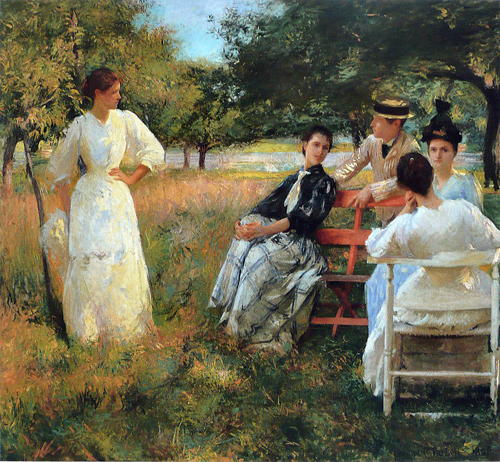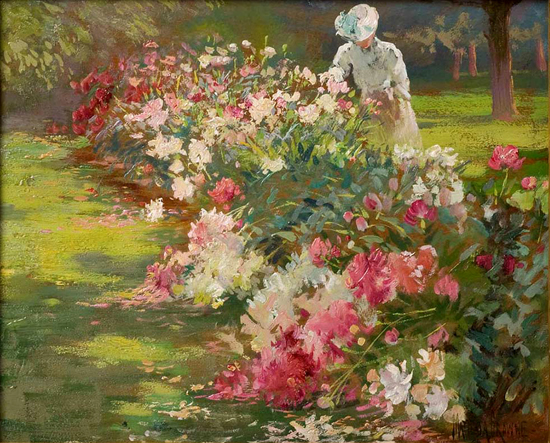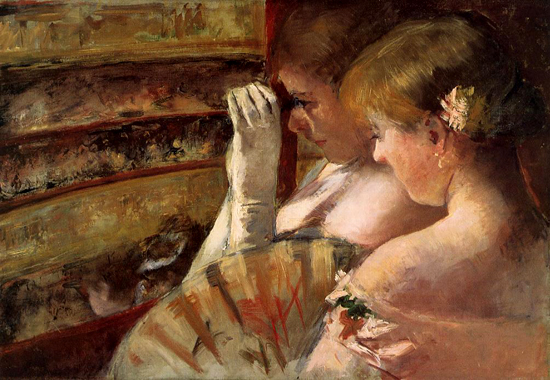American Impressionists favored asymmetrical composition, cropped figures, and plunging perspectives in their works in order to create a more "impressionist" version of the subject. They painted scenes that depicted the upper class in an effort to show off America's economic prowess
Content and composition
Prior to the Impressionists, other painters, notably such 17th-century Dutch painters as Jan Steen, had emphasized common subjects, but their methods of composition were traditional. They arranged their compositions so that the main subject commanded the viewer's attention. The Impressionists relaxed the boundary between subject and background so that the effect of an Impressionist painting often resembles a snapshot, a part of a larger reality captured as if by chance. Photography was gaining popularity, and as cameras became more portable, photographs became more candid. Photography inspired Impressionists to represent momentary action, not only in the fleeting lights of a landscape, but in the day-to-day lives of people.
The development of Impressionism can be considered partly as a reaction by artists to the challenge presented by photography, which seemed to devalue the artist's skill in reproducing reality. Both portrait and landscape paintings were deemed somewhat deficient and lacking in truth as photography "produced lifelike images much more efficiently and reliably".
In spite of this, photography actually inspired artists to pursue other means of creative expression, and rather than compete with photography to emulate reality, artists focused "on the one thing they could inevitably do better than the photograph—by further developing into an art form its very subjectivity in the conception of the image, the very subjectivity that photography eliminated".
The Impressionists sought to express their perceptions of nature, rather than create exact representations. This allowed artists to depict subjectively what they saw with their "tacit imperatives of taste and conscience". Photography encouraged painters to exploit aspects of the painting medium, like colour, which photography then lacked: "The Impressionists were the first to consciously offer a subjective alternative to the photograph".
Another major influence was Japanese ukiyo-e art prints (Japonism). The art of these prints contributed significantly to the "snapshot" angles and unconventional compositions that became characteristic of Impressionism. An example is Monet's Jardin à Sainte-Adresse, 1867, with its bold blocks of colour and composition on a strong diagonal slant showing the influence of Japanese prints.
Edgar Degas was both an avid photographer and a collector of Japanese prints.[30] His The Dance Class (La classe de danse) of 1874 shows both influences in its asymmetrical composition. The dancers are seemingly caught off guard in various awkward poses, leaving an expanse of empty floor space in the lower right quadrant. He also captured his dancers in sculpture, such as the Little Dancer of Fourteen Years.



